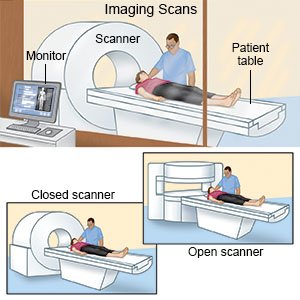MRI (Magnetic Resonance Imaging) for Children
Medically reviewed by Drugs.com. Last updated on May 6, 2024.
What do I need to know about magnetic resonance imaging (MRI)?
An MRI is a test that uses magnetic fields and radio waves to take pictures inside your child's body. An MRI is used to see blood vessels, tissue, muscles, and bones. It can also show organs, such as your child's heart, lungs, or liver. An MRI can help your child's healthcare provider diagnose or treat a medical condition. It does not use radiation.
How do I help my child prepare for an MRI?
- Tell your child what to expect before, during, and after the MRI.
- Tell your child's healthcare provider about all your child's current medicines. The provider will tell you which medicines to give or not give on the day of the MRI. Your child may be given medicine to help him or her feel calm and relaxed during the MRI.
- Tell your child's provider if your child has any metal in his or her body, such as an implant or aneurism clip. Tell your child's provider if your child has a tattoo or wears a medicine patch.
- Have your child remove any metal items, such as jewelry, glasses, or hearing aids before your child enters the MRI room.
What will happen during an MRI?
Your child's healthcare provider will ask him or her to lie on a table. Contrast liquid may be used to help a body part show up more clearly. The contrast is given through an IV placed in a vein in your child's arm. The table will be moved into an open space in the middle of the machine. Your child will need to lie still during the MRI. It is normal to hear knocking, thumping, or clicking noises from the machine.
 |
What are the risks of an MRI?
An MRI may cause a metal object in your child's body to move out of place. This may cause serious injury, or stop the object from working properly.
Care Agreement
You have the right to help plan your child's care. Learn about your child's health condition and how it may be treated. Discuss treatment options with your child's healthcare providers to decide what care you want for your child. The above information is an educational aid only. It is not intended as medical advice for individual conditions or treatments. Talk to your doctor, nurse or pharmacist before following any medical regimen to see if it is safe and effective for you.© Copyright Merative 2024 Information is for End User's use only and may not be sold, redistributed or otherwise used for commercial purposes.
Further information
Always consult your healthcare provider to ensure the information displayed on this page applies to your personal circumstances.
